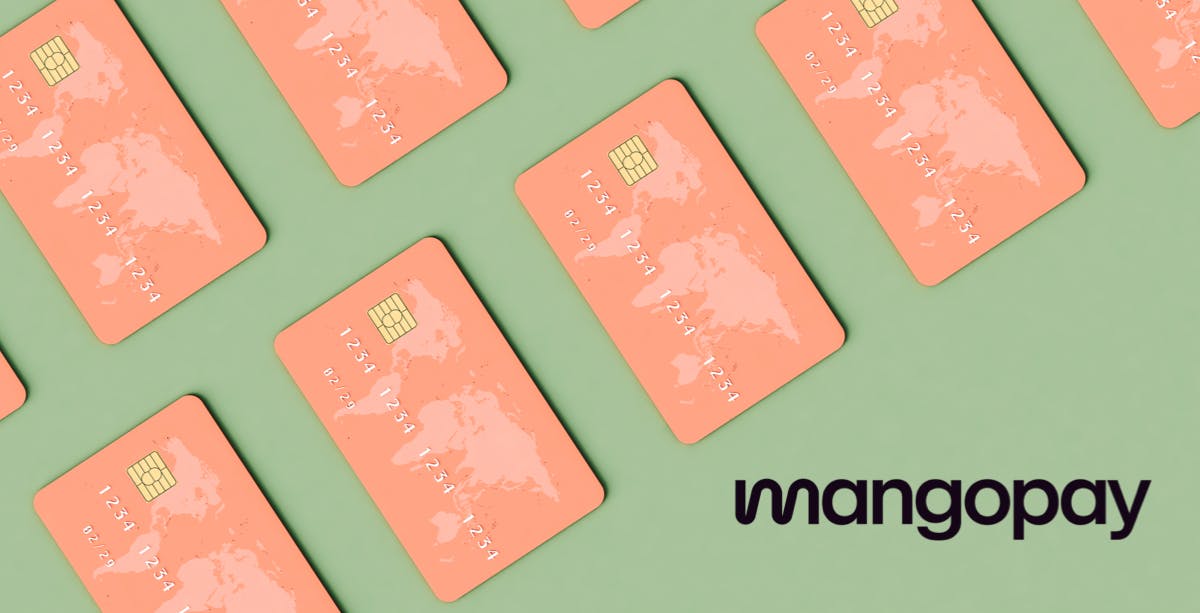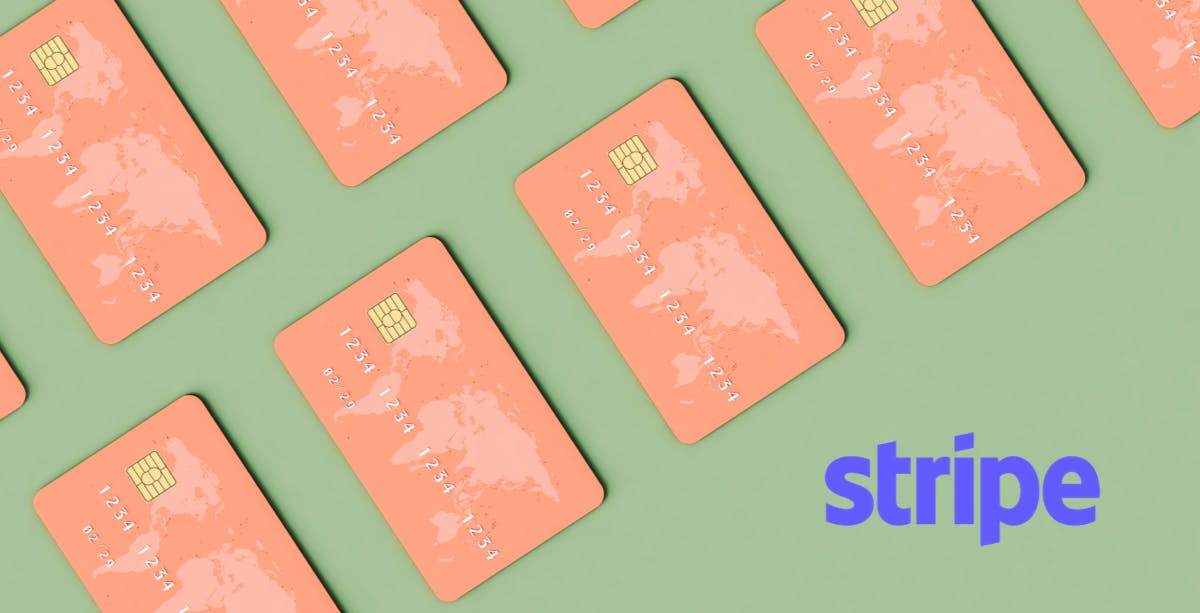Mangopay marketplace payments – overview of key features
Are you considering Mangopay to power your marketplace payments? Here's a detailed overview of Mangopay’s marketplace payment features.
Published on
Last updated on

Online payments are a critical feature for most online marketplaces. This makes choosing a marketplace payment provider an important strategic decision for a marketplace founder.
There are hundreds of companies that facilitate marketplace payments. This article gives you a detailed overview of one of these companies: Mangopay.
Key points in this article:
- Background information on Mangopay: Valuation, competitors, and famous marketplaces using Mangopay to power their payments.
- Mangopay's key marketplace features: Countries, currencies, payment methods, split payments, escrow, subscription payment, and payment security.
- Mangopay's pricing and some things to consider before building a Mangopay integration.
Mangopay is an online payment solution that focuses exclusively on marketplaces and crowdfunding platforms. This strict focus differentiates Mangopay from many of its competitors and allows it to offer some specialized marketplace functionality that isn't always available with companies that have a broader focus. For example, Mangopay is one of the few marketplace payment providers that offers a multivendor shopping cart functionality.
Mangopay was founded in 2013 in Luxembourg. It boasts over 2,500 customers in 170 countries and €50 billion in transactions processed since it was founded.
There are hundreds of online payment providers out there. In the specific area of online marketplaces, Mangopay's main competitors include:
Here's an article to help you compare the different marketplace payment providers.
Well-known marketplaces using Mangopay include:
- Vinted: A global platform for selling, buying, and swapping second-hand wardrobe items.
- Wallapop: A Craigslist-style classified listings marketplace for buying and selling secondhand goods.
- Chrono24: The world’s leading marketplace for new and luxury watches.
- Malt: Europe’s leading freelance management system and marketplace.
- Rue Du Commerce: A marketplace for computing systems, gaming devices, and hi-tech home installations.
- Paris fashion shops: A French marketplace for fashion retailers and boutiques.
- Tracktor: An equipment rental marketplace for craftsmen and SMEs in the construction industry.
- Others include Pixmania, Maison & Objet, Beebs, Retif, Anaxago Capital, Total Energies, SamBoat, Ulule, Fundimmo, Sorare, Rakuten, Leboncoin, Mercateo, and Au Revoir.
Mangopay’s advantage is in its focus on marketplaces, which allows it to offer lots of advanced features and functionality specifically for online marketplaces. Its biggest limitation is its relatively small list of supported currencies. Below is an outline of Mangopay's key features for marketplaces:
Every country has its own regulation related to online payments. Because of this, no payment service provider supports all its features in all countries in the world.
In terms of geographical restrictions, there are three main factors to consider. First, you need to be able to send payouts to bank accounts in the countries you want to support. Second, you need to handle payments in the currencies of the countries in question. Third, it’s essential that you can support the most important payment methods in those countries. You need all of these capabilities to offer a sufficiently good payment experience.
Mangopay works without restrictions in 200+ countries, and allows users from 20+ additional countries where it can’t process payouts.
The company supports payments in 15 major currencies, including EUR, USD, GBP, ZAR, SEK, PLN, NOK, JPY, HKD, DKK, CZK, CHF, CAD, AUD, and AED.
Mangopay supports the following payment options:
- Virtual IBANs
- Cards: Visa, Mastercard, AMEX, Maestro, Cartes Bancaires, and Bancontact.
- Bank wires: BACS and SEPA
- Alternative payment methods (APMs): Apple Pay, Google Pay, PayPal, Multibanco, iDEAL, Giropay, Payconiq, MB Way, Multibanco, BLIK, and Satispay.
Most marketplace business models require the payment to be split between multiple parties. An example is Airbnb, where a larger part of the cash sent by the customer goes to the provider and a small cut goes to the marketplace platform. This business model is called commission, and it powers some of the world’s most successful marketplaces.
In some cases, you may want to split the payment between more than two parties. Take the example of a multi-vendor shopping cart, where one customer purchases products from several sellers during a single checkout. Another example is where you run a referral program and you want to send part of the payment to the person who brought in the customer.
Mangopay has got you covered regarding split payments. It allows the automatic splitting of payments between as many parties as needed. This makes it possible to build a multi-vendor shopping cart – a complicated feature many other marketplace payment providers don’t offer.
Any marketplace payment provider should be able to hold the money for a while after the customer has made the payment. This process is referred to as escrow, and it's a key feature that helps build trust between sellers and buyers.
Mangopay offers an unlimited escrow service, which means you can freely determine the length of the delay between the payment from your customer and the payout to your seller.
Some marketplaces monetize through subscriptions and charge their users a monthly fee to use the platform. For this to be possible, the marketplace payment provider stores the customer’s credit card details and automatically charges them when the due date arrives without further action from the customer. Mangopay supports subscription billing.
Data and transaction security is paramount in reducing marketplace financial crime. Mangopay has an E-Money Issuer (EMI) license granted by the Commission de Surveillance du Secteur Financier (CSSF). This is a financial regulatory authority that monitors financial activities in Luxembourg, enforcing laws that protect consumers against financial fraud.
Moreover, Mangopay recently acquired the AI fraud detection and prevention company Nethone to offer marketplaces anti-fraud solutions. This gives you even more assurance of its commitment to high security standards.
The company also follows strict know-your-customer (KYC) protocols. Sellers are required to provide the necessary documentation with details like name, email address, phone number, proof of business address, government-issued ID, and tax identification number for identity verification when they join your marketplace and link to your payment gateway. These details are proof that the seller is legitimate, minimizing the risk of fraud.
Another critical security measure Mangopay implements is the 3D secure 2 protocol. Once a customer enters their card details, they’re taken to a page hosted by the card issuer to provide a password. The transaction is then approved if the passcode is correct. If the system detects red flags, perhaps multiple wrong password entries, the purchase may be declined, minimizing fraud.
Most payment providers charge a small fixed fee per transaction plus a tiny percentage of the total amount paid. In addition to transaction fees, some—like Mangopay—charge a one-off setup fee.
At the time of this writing, Mangopay’s pricing is at the lower end of the scale. When we first researched Mangopay for this article, its transaction fees started from 1.4% + €0.25, with some differences in the rates depending on the payment method. For comparison, Stripe Connect starts at 2.9% + 0.30 USD. Mangopay also charged a platform fee which starts from €249 per month. Payouts start from €0.20.
Since then, Mangopay has withdrawn detailed pricing information from its website, and only offers the pricing information via contacting support. This may indicate that the pricing is more flexible, based on each customer's use case and transaction volumes.
Sharetribe doesn’t offer a pre-built Mangopay integration (only Stripe is available out of the box), but it’s possible to build a custom integration to any third-party service. Some of our customers have integrated Mangopay, and from what we hear, they have been pleased with their choice.
Mangopay’s product is focused on marketplaces and crowdfunding platforms. Thus, their API is smaller, meaning developers can learn it relatively quickly. In general, integrating a 3rd party payment gateway can sometimes be complex, so if you’re working with an external developer, make sure you get their quote on building the Mangopay integration.
In your choice of a marketplace payment provider, it’s good to also spare a moment to consider how easy it is to contact customer service teams and how effective they are in answering your questions. While we don’t have direct experience working with Mangopay, our general experience is that smaller, specialized players like Mangopay tend to win big names when it comes to the quality of customer support. The best way to evaluate this is to contact their support with some screening questions and see how you rate the experience.
Mangopay, launched in 2013, has rapidly grown to over 2 million active wallets, making it one of the most popular marketplace payment methods.
It’s available in 200+ countries globally, supporting 15 currencies. It offers all the most important marketplace features like split payments, delayed payouts, subscription payments, and premium security features. Unlike many competitors, Mangopay allows for building a multi-vendor shopping cart.
Mangopay’s pricing is no longer publicly available. At the time of researching this article, its transaction fees were generally on the lower end, starting at 1.4% + €0.25 EUR per card-in transaction, and payouts starting from €0.20. Mangopay also charged a platform fee which starts from €249 per month. However, as pricing information is no longer available on the website if you're considering Mangopay, it's a good idea to contact them early on in the process for more accurate information on their pricing.
More articles for you

Marketplace payments: The complete guide
Marketplace payments are very complex. This guide helps you list your feature requirements and compare and choose the best marketplace payment provider for you. (Yes, there's a comparison table!)

Stripe marketplace payments – overview of Stripe Connect key features
Stripe Connect key features, fees, security compliance, integration and more.

Adyen marketplace payments – overview of key features
Should you choose Adyen for your marketplace payments? Read this article to know Adyen's features, fees, supported currencies and countries, tax handling, & more.
Start your 14-day free trial
Create a marketplace today!
- Launch quickly, without coding
- Extend infinitely
- Scale to any size
No credit card required

